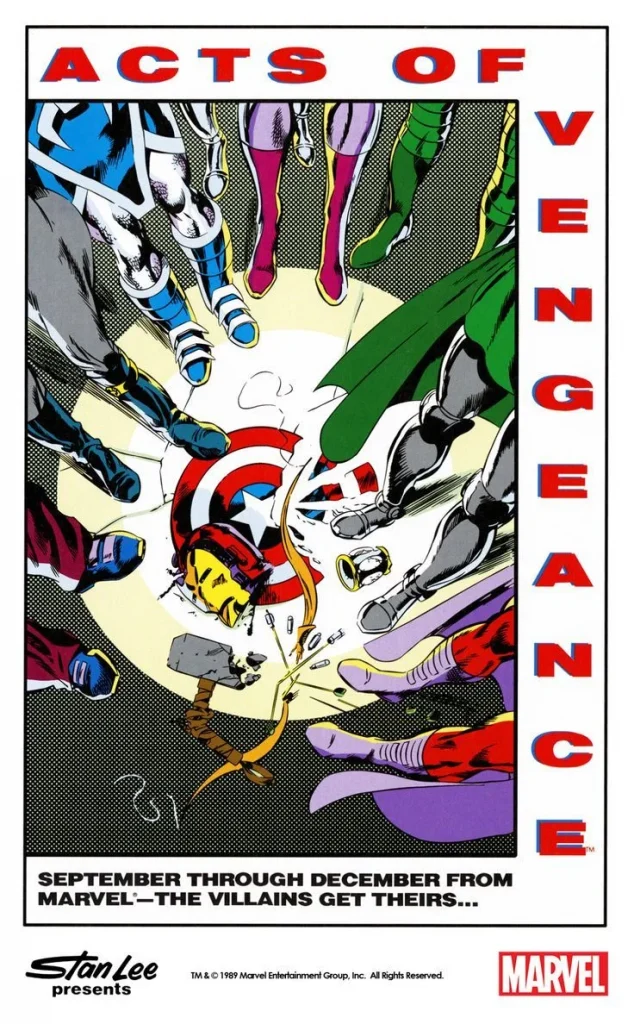
Unmasking Marvel’s Villain Swap: A Look Back at Acts of Vengeance
Remember when Marvel Comics decided to shake things up? Dramatically? In late 1989, a massive event swept across nearly every title. Heroes faced villains they’d never fought before. This wasn’t random chaos; it was a calculated scheme known as the Acts of Vengeance Marvel Crossover. This ambitious storyline offered fresh matchups and high stakes. We’ll dive into this classic event, exploring its unique premise and lasting impact. As dedicated followers of comic history, we appreciate these large-scale narratives. This crossover remains a fascinating piece of Marvel history, well-documented by fans and historians alike (see one perspective here).
What Was the Acts of Vengeance Marvel Crossover?

The core idea behind Acts of Vengeance was simple yet brilliant. What if supervillains swapped their usual heroic adversaries? The scheme originated from a surprising source: Loki, the God of Mischief. Seeking revenge against Thor and the Avengers (whom he accidentally helped form), Loki devised a grand plan. He disguised himself and approached some of the Marvel Universe’s most powerful masterminds, as explained in detail by CBR.
This inner circle, dubbed the “Prime Movers,” included Doctor Doom, Magneto, Kingpin, Mandarin, Red Skull, and the Wizard. Loki, acting as an advisor, convinced them that heroes grew complacent fighting familiar foes. Therefore, facing unknown villains would grant the element of surprise. The plan was to overwhelm the heroes, specifically targeting the Avengers and the Fantastic Four (check the event overview on Comic Vine).
To kickstart the chaos, Loki engineered a mass breakout at the Vault. This super-secure prison housed numerous villains (you can watch a breakdown of the early issues here). This crucial event depicted in Avengers Spotlight #26, by Dwayne McDuffie and Dwayne Turner. Iron Man and Hawkeye responded, highlighting the immediate, widespread nature of the threat. With scores of villains freed and directed by the Prime Movers, the stage was set. Heroes across the board suddenly found themselves battling unfamiliar, dangerous enemies. This sprawling event touched nearly every corner of the Marvel Comics universe. Many dedicated readers followed the action across numerous titles (requiring a detailed reading order), a testament to the event’s scope, something we chronicle often at Comic Book Addicts.
Unexpected Battles and Key Moments
The “villain swap” concept led to some truly memorable and unexpected confrontations during the Acts of Vengeance event (see a list of tie-ins). These fresh matchups tested heroes in new ways.
- Thor vs. Juggernaut: Loki personally unleashed the unstoppable Juggernaut against his brother, Thor. This clash, detailed in Thor #411-412 by Tom DeFalco and Ron Frenz, pushed the Thunder God to his limits. Furthermore, it marked the debut of the New Warriors, who intervened at a critical moment.
- Cosmic Spider-Man: Spider-Man experienced a massive power-up during this event. Temporarily imbued with the cosmic Uni-Power (making him Captain Universe), he faced villains far outside his usual weight class. Amazing Spider-Man #327-329, featuring work by David Michelinie, Erik Larsen, and Todd McFarlane, saw him battle Magneto and even the Hulk. He also easily handled villains like the Trapster and Titania (the Spider-Man tie-ins were significant). This power surge was ultimately revealed to be for combating Loki’s final gambit: the Tri-Sentinel.
- Daredevil vs. Ultron: The Man Without Fear faced the homicidal Avengers robot Ultron in Daredevil #275-276 by Ann Nocenti and John Romita Jr. This unlikely pairing forced Daredevil to rely on help from the Inhumans Karnak and Gorgon.
- Fantastic Four’s Gauntlet: Doctor Doom, one of the Prime Movers (though later revealed to be a Doombot), subjected the Fantastic Four to a different kind of assault. While they dealt with political hearings, Doom sent wave after wave of lower-tier villains, testing their patience more than their power.
- X-Men & Psylocke’s Transformation: The Mandarin targeted the X-Men. Uncanny X-Men #256-258 involved Psylocke, recently emerged from the Siege Perilous, being captured by the Hand and presented to the Mandarin. Brainwashed (or so it seemed), she battled Wolverine. This storyline had long-lasting repercussions, eventually leading to the complex body-swap revelation involving Kwannon (many retrospectives, like this one from AIPT, discuss the event’s impact). Examining the stunning comic book covers from this era reveals the dramatic shifts characters underwent.
- Magneto vs. Red Skull: Perhaps the most personal conflict arose between two Prime Movers. Magneto, a Holocaust survivor, used the alliance as an opportunity for revenge against the Nazi Red Skull. In Captain America #367 by Mark Gruenwald and Kieron Dwyer, Magneto captured the Skull and buried him alive, intending for him to starve.
Despite initial successes for the villains, the alliance eventually crumbled (as detailed in this crossover summary). Egos clashed, and mistrust grew. Doctor Doom and Kingpin distanced themselves. The Avengers ultimately tracked down the remaining Prime Movers and Loki. Thor confronted his brother, forcing Loki to retreat but not before one last act – fusing Sentinels into the destructive Tri-Sentinel, which Cosmic Spider-Man ultimately defeated (watch a full event recap). While John Byrne helped steer the core Avengers titles during the event, the sheer number of tie-ins across different creative teams (find the complete list at CMRO) led to some inconsistencies, yet it produced many standout moments. You can find collected editions like the Acts of Vengeance: Marvel Universe TPB.

The Legacy of Vengeance
The Acts of Vengeance Marvel Crossover stands out for its unique premise. It forced heroes out of their comfort zones and generated exciting, unpredictable fights. While the masterminds’ alliance was fraught with infighting, the core idea of swapping villains provided months of engaging stories across the Marvel line. It showcased the vastness of Marvel’s hero and villain rosters. Key events, like Spider-Man gaining cosmic powers and Psylocke’s transformation, had significant impacts moving forward. It was a bold experiment in crossover storytelling.What are your favorite moments from Acts of Vengeance? Did you enjoy the villain swap concept? Share your thoughts on Twitter!



